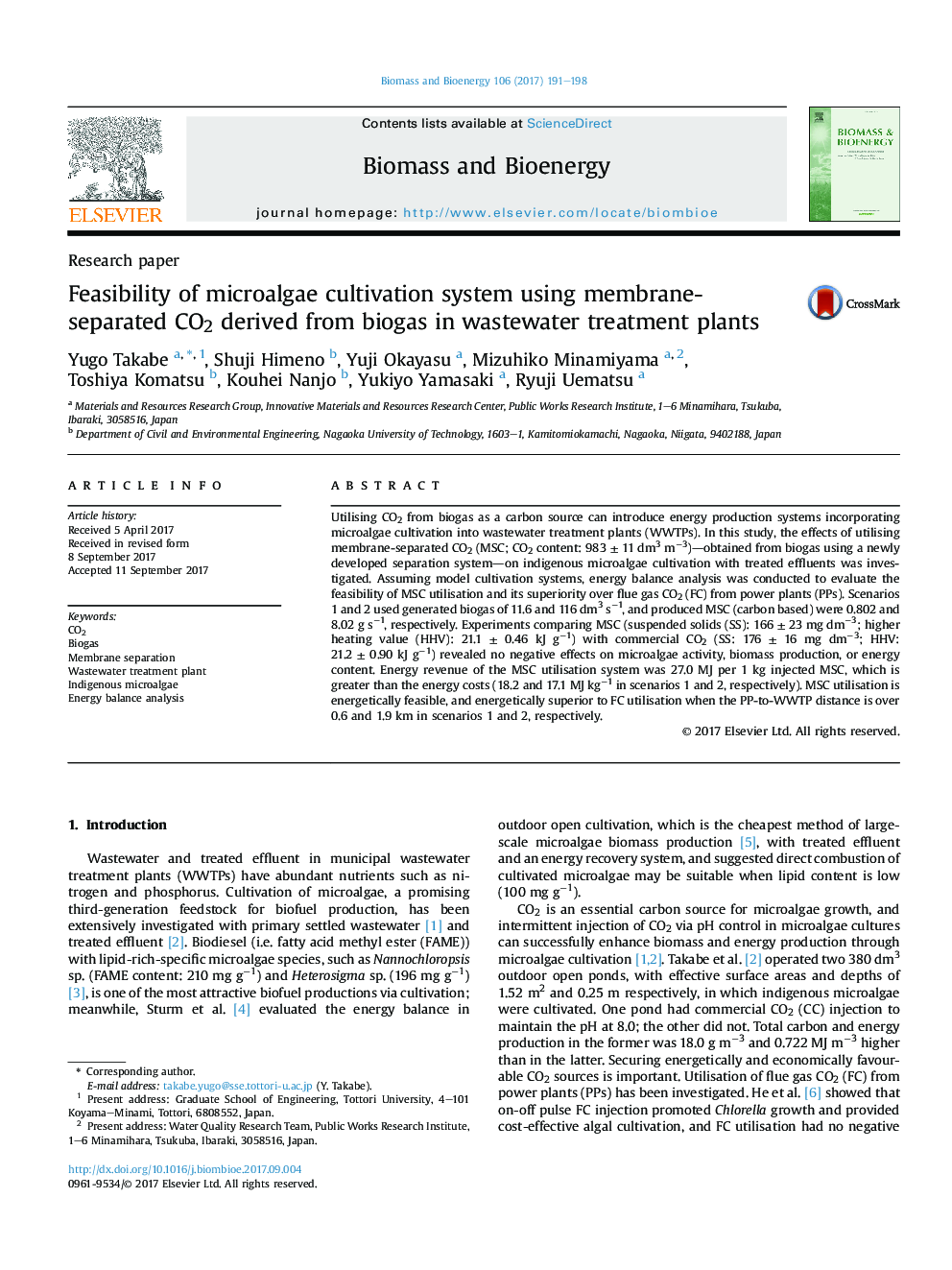| Article ID | Journal | Published Year | Pages | File Type |
|---|---|---|---|---|
| 4996210 | Biomass and Bioenergy | 2017 | 8 Pages |
Abstract
Utilising CO2 from biogas as a carbon source can introduce energy production systems incorporating microalgae cultivation into wastewater treatment plants (WWTPs). In this study, the effects of utilising membrane-separated CO2 (MSC; CO2 content: 983 ± 11 dm3 mâ3)-obtained from biogas using a newly developed separation system-on indigenous microalgae cultivation with treated effluents was investigated. Assuming model cultivation systems, energy balance analysis was conducted to evaluate the feasibility of MSC utilisation and its superiority over flue gas CO2 (FC) from power plants (PPs). Scenarios 1 and 2 used generated biogas of 11.6 and 116 dm3 sâ1, and produced MSC (carbon based) were 0.802 and 8.02 g sâ1, respectively. Experiments comparing MSC (suspended solids (SS): 166 ± 23 mg dmâ3; higher heating value (HHV): 21.1 ± 0.46 kJ gâ1) with commercial CO2 (SS: 176 ± 16 mg dmâ3; HHV: 21.2 ± 0.90 kJ gâ1) revealed no negative effects on microalgae activity, biomass production, or energy content. Energy revenue of the MSC utilisation system was 27.0 MJ per 1 kg injected MSC, which is greater than the energy costs (18.2 and 17.1 MJ kgâ1 in scenarios 1 and 2, respectively). MSC utilisation is energetically feasible, and energetically superior to FC utilisation when the PP-to-WWTP distance is over 0.6 and 1.9 km in scenarios 1 and 2, respectively.
Related Topics
Physical Sciences and Engineering
Chemical Engineering
Process Chemistry and Technology
Authors
Yugo Takabe, Shuji Himeno, Yuji Okayasu, Mizuhiko Minamiyama, Toshiya Komatsu, Kouhei Nanjo, Yukiyo Yamasaki, Ryuji Uematsu,
